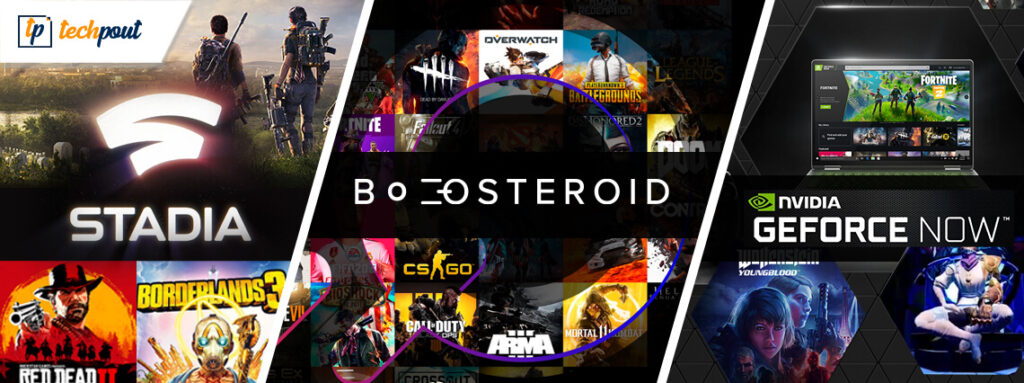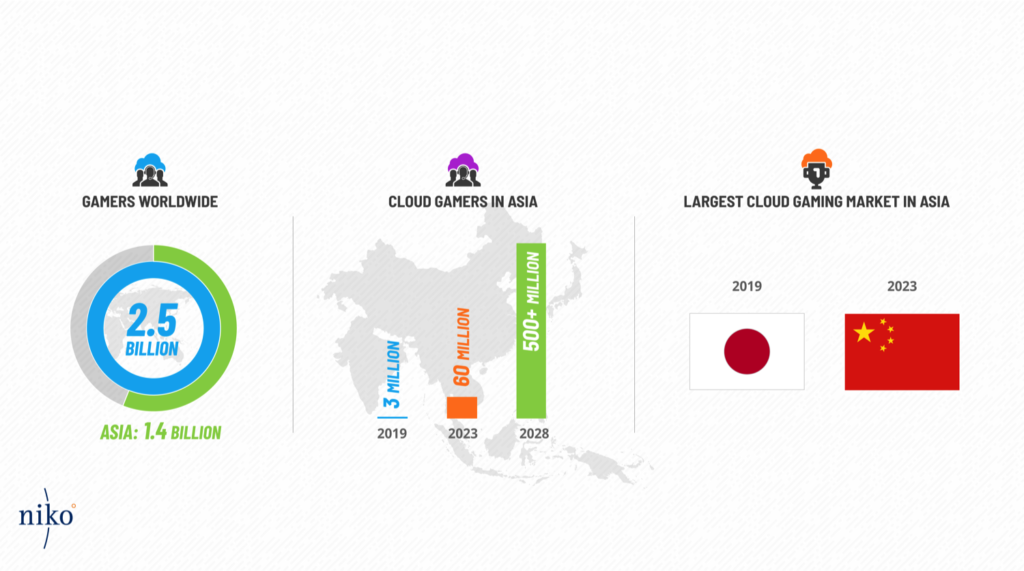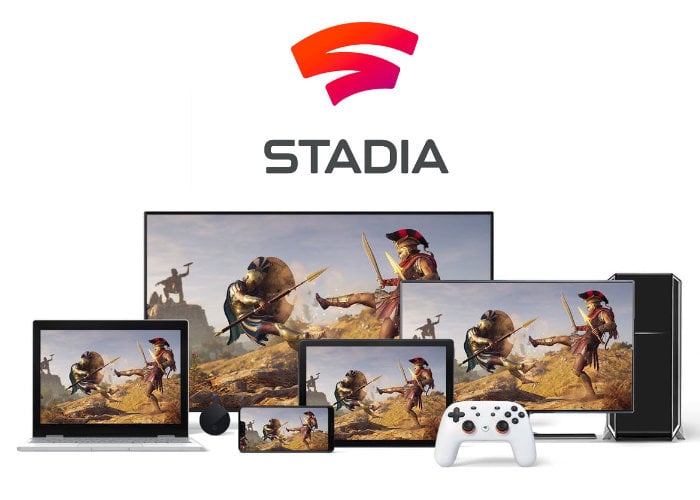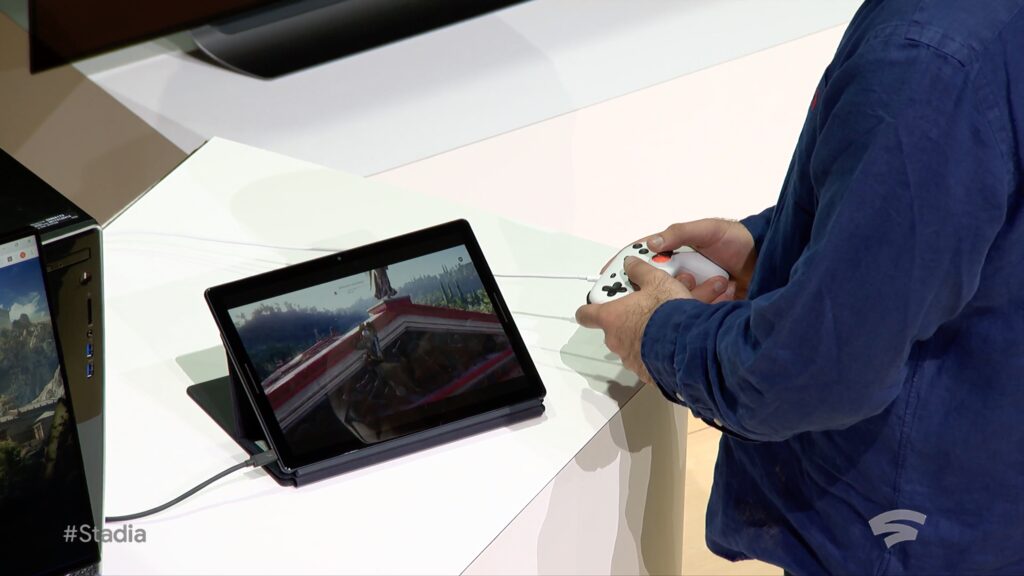Gaming has meant many things just within the past 20 years. The rate of growth in this industry continuously shatters records, and new innovations constantly keep things more exciting than ever. Cloud Gaming is the new buzzword around the industry, but is it another gimmick? Or, does it really have the potential to shake the industry? We’ll answer those questions today while providing an explanation of what this technology entails.

Cloud Gaming is gaming as a service. Essentially, it’s a form of online gaming that uses remote servers to stream games directly to a player’s device. In other words, it lets you play games from the cloud. You might recognize this business model in some aspects of your life already.
Music streaming was the first service in this format to make waves internationally. Although not the original purpose of the platform, YouTube was the first way for people access songs from the cloud. However, services like Apple Music and Spotify streamlined the process. Their success was so pronounced that YouTube had to create their own dedicated music streaming platform to compete.

Currently though, there are numerous streaming platforms for movies, music and even book subscriptions. Gaming however, is a different beast to conquer. When creating video games, developers typically have a lot of assets and technical nuances created to make a game its best possible self on a single device i.e. console, PC or phone.
When downloaded, your device runs a game to the extent its specs can handle the load. With bigger and more ambitious gaming titles, this requires dedicated devices created for gaming. New technologies are used by devs to improve video games every year. Therefore, within a single console generation, the look and feel of titles can drastically leap forward.

That means that we will always need to upgrade our devices. A decade ago, that could mean a new device every 5 years. Now, it could cost us a check every 2 years. Within the last console generation, we saw new devices like the PS4 Pro and the XBOX One X. Although they were under the monikers of PS4 and XBOX One, they were essentially next generation devices. In PC Gaming, NVIDIA’s new graphics cards have Ray Tracing, Tensor Cores and other important specifications that completely influence how new games are created.

More importantly, when a manufacturer creates a console, the production costs are usually much higher than the profits made from console sales. Therefore, the bulk of income made with gaming in companies like Microsoft and Sony generally come from the games sold, rather than the consoles sold.
With all that has been said, Cloud Gaming is quite the revolutionary solution. Imagine if companies could manufacture numerous mega-consoles that work with other infrastructure to deliver games directly to your devices to stream. That will fundamentally change how gaming works, and reduce the heavy console production costs. Cloud Gaming services are making this possible.

Some Cloud Gaming services have launched already, while others are in the process of deployment. Generally, all the important players in this market are going to be fully accessible in 2020. Some might receive some delays thanks to the pandemic, but most of this is happening now.

Google launched its Google Stadia service in November 2019, but it hasn’t received a warm welcome. Laggy gameplay, reaching promises from the company and underwhelming results have been the general response to Google’s take on Cloud Gaming. With a minimum internet download speed of 10Mbps required and 35Mbps minimum for 4K, the toll on your internet is quite high.
Compared to its launch, Stadia in 2020 has improved quite a bit. In parts of the US, users have reported a seamless experience while others are still dealing with lag and inconsistent gameplay. However, things are getting better. Currently, Google Stadia is available in 14 countries.

Microsoft’s Project xCloud is a streaming service with a major intent of being an industry leader in Cloud Gaming. Microsoft plans to introduce a large number of games on the platform in 2020
In the mobile gaming market, a subscription based service was launched last year by Apple. Apple Arcade is a gateway for many users into the potential of games on demand.

According to experts, the cloud gaming market is expected to exceed $450 million in 2023. Sony has partnered with Microsoft for their Azure cloud network which is currently being used for PlayStation Now. Even EA, a game publisher is planning to launch its own cloud gaming service.
With everyone throwing their bets on Cloud Gaming, not every company has what it takes. Some are depending on multiple external companies to provide essential aspects of Cloud Gaming. Fundamentally, Cloud Gaming cannot depend on one company. The pieces of the puzzle depend on experts for every part of the process.
Furthermore, 5G is increasing in popularity and with the rise of more CDN’s (Content Delivery Networks) around commercial areas worldwide, Cloud Gaming has some aspects of its deployment ready. The main issue with CDNs are their unpredictability. A CDN might be great but another one 50km away could be bad. Therefore, not all users will experience the same quality. Other similar factors are in play, so geographical advantages are essential to the survival of Cloud Gaming.

PlayStation is providing limited stocks for the PS5 at launch compared to the PS4’s original availability. This in addition to the unspoken price tags are driving consumers to fear that they are getting the short end of the bargain.
If Cloud Gaming services remain at an average price of $10 monthly, then this might actually be the final console generation. Everything is setting up for the Internet of Things to take the world by storm. We as consumers can only hope the regulations attached to subscription based models are not exploitative.
To Find out more about Cloud Gaming Click Here
Related Articles:
Our Top 3 Gaming Tablets in 2020

